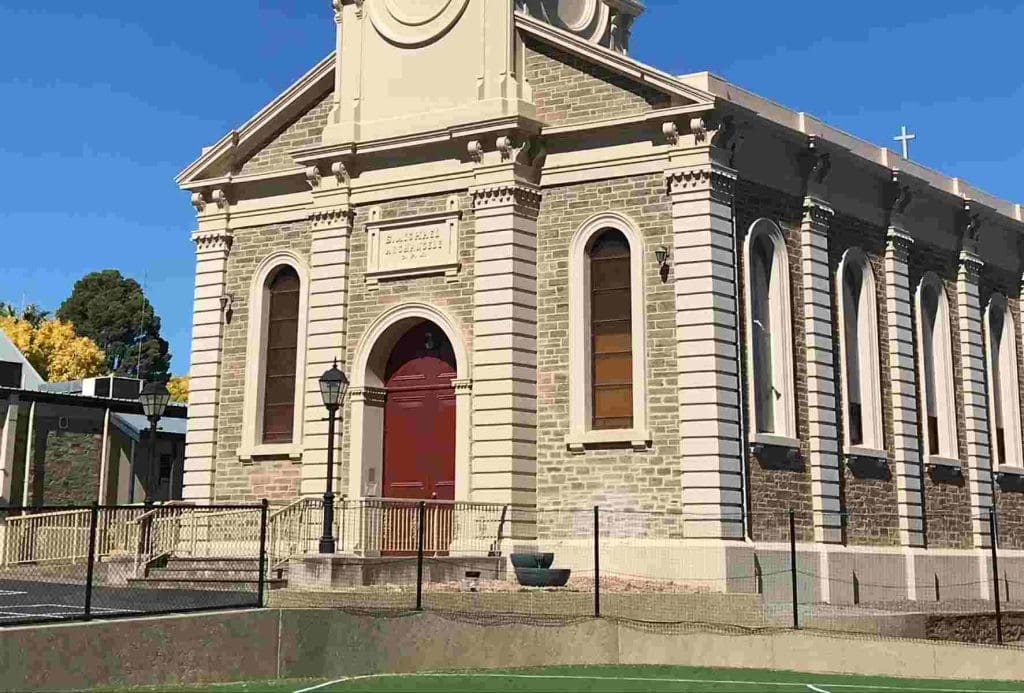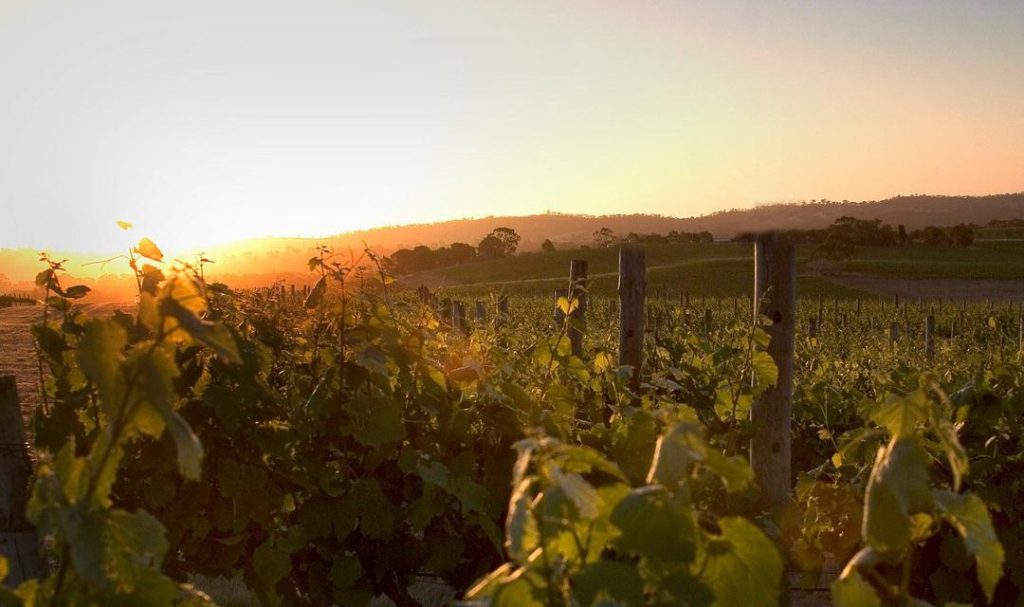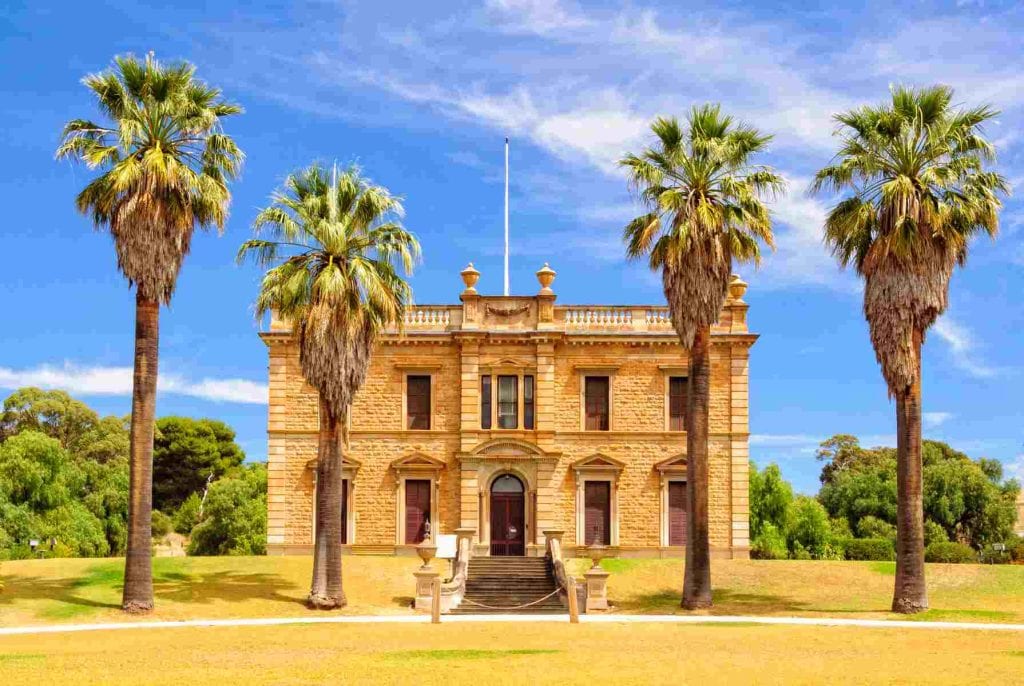Exploring Clare Valley’s rich historical sites offers a unique look into South Australia’s colonial past, early settlement, and copper mining history.
This blog highlights the most fascinating heritage spots to visit, ranging from historic stone buildings and churches to well-preserved railway stations and picturesque homesteads.
It’s designed to help travellers make the most of their time in the region without missing key landmarks.
Whether staying for a day or a weekend, this guide makes it easy to plan a rewarding and informative trip through Clare Valley’s past.
Ancient History – The Ngadjuri People
Long before European settlement, the Clare Valley was home to the Ngadjuri people—the original custodians of this land.
The name Ngadjuri means we people, reflecting their deep connection to the Country. They lived here for thousands of years, with major camps around Clare and Auburn.
Their presence shaped the valley’s identity. They left behind cultural sites, and stories passed down through generations.
Today, these traditions are still part of the region, honoured in local museums, cultural centres, and community storytelling.
Through language revival and cultural education, the Ngadjuri people’s knowledge continues to inspire and enrich Clare Valley’s heritage.
Historic Churches Across the Valley
The Clare Valley’s landscape is dotted with churches that tell stories of early settlers, community spirit, and faith.
These buildings aren’t just places of worship—they’re landmarks that have witnessed the region’s growth and change over more than 170 years.
From the first stone walls raised by determined pioneers to the stained-glass windows that still catch the sunlight, each church offers a unique window into Clare’s past.
Exploring these sites reveals much about the people who shaped the valley and the values they held dear.
St Michael’s Catholic Church

Clare’s first significant building, St Michael’s Catholic Church, was built between 1847 and 1849.
It’s one of South Australia’s earliest Catholic churches, with town founder Edward Gleeson helping to raise funds.
A larger church replaced the original in 1883, but the 1849 stone building still stands behind it.
Visitors can attend Mass every Friday at noon or visit at 29 Victoria Road, Clare.
St Barnabas Anglican Church
Just north of the town centre, St Barnabas Anglican Church was completed in 1851, thanks to Edward Gleeson’s encouragement.
It’s the oldest rural Anglican church north of Adelaide.
Although no longer in use regularly, its stone walls and original stained-glass memorials reveal early Anglican life in the valley.
The church holds Sunday services from 9:30 AM to 11:00 AM at 25 Farrell Flat Road, Clare.
Former Wesleyan (Uniting) Chapel
The Former Wesleyan (Uniting) Chapel, opened in 1857, served the Methodist community for over a century before being converted into a civic centre.
This modest stone building, located on Main Street, is open for visits by appointment only.
Sacred Wine – Clare’s Oldest Wineries
Clare Valley’s rich winemaking history runs deep, rooted in faith and community.
Some of the region’s oldest wineries originated as sacred places where wine was crafted not only for enjoyment but also for spiritual ceremonies.
These historic sites offer more than just tastings—they’re windows into the valley’s heritage, where tradition and terroir come together.
Sevenhill Cellars and St Aloysius’ Church
Founded by Austrian Jesuit priests in 1851, Sevenhill Cellars is the oldest winery in Clare Valley.
Originally established to produce sacramental wine, it remains a working winery while earning acclaim for its table wines.
Set on 100 acres of vineyards; the cellar door welcomes visitors daily from 10 am to 5 pm. The site is more than a winery.
It houses the stunning Gothic Revival St Aloysius’ Church, completed in 1875, featuring slate floors and stained glass imported from Munich.
Beneath the surface lies a unique Jesuit crypt holding the graves of 41 priests—a solemn reminder of the community’s history.
Sevenhill also once hosted Saint Aloysius’ College, South Australia’s first Catholic boarding school, which ran from 1856 to 1886.
Visitors can explore the underground wine cellar and take guided tours of the church and grounds, which are usually included with wine tasting or can be arranged through the retreat centre.
The peaceful park-like setting is perfect for a picnic, making it a place to savour both history and flavour.
Polish Hill River Church Museum
Just a few kilometres south of Sevenhill, Polish Hill River carries its own story.
Settled in the 1850s by Polish Catholic immigrants, this farming community built a church and school that remain central to its heritage.
The church, now a museum, commemorates the lives and stories of Polish pioneers and post-World War II migrants who shaped the area.
The museum is open from 11:00 am to 4:00 pm on the first Sunday of each month (except January and Easter Sunday).
It displays artefacts, photographs, and stories that give visitors a glimpse into the Polish-Australian experience.
Group and school visits can be arranged for a more in-depth exploration of this unique chapter in Clare Valley history.
Knappstein Enterprise Winery

In Clare township, the Knappstein Winery is situated in a National Trust-listed building steeped in history.
The former Enterprise Brewery, completed in 1878, was converted into a winery and now produces some of Clare’s boldest reds.
The cellar door is open daily from 10 am to 4 pm (closed on Christmas and New Year’s Day).
Visitors can wander through the old brick brewhouse and enjoy tastings in a setting where history and hospitality blend seamlessly.
The Riesling Trail – From Rail to Trail
The Clare Valley’s Riesling Trail is a fantastic example of turning history into a new kind of adventure.
Initially, a railway line connecting Clare to Auburn was damaged during the 1983 Ash Wednesday bushfires.
Rather than letting it fade away, the community transformed the route into a 35-kilometre walking and cycling trail that now invites visitors to explore the region at a slower, more scenic pace.
Following this peaceful trail, you’ll pass through rolling vineyards, quaint villages, and open farmland, all framed by the stunning Clare Valley landscape.
The trail links several small towns, making it easy to stop along the way to explore local history or enjoy a tasting at some of the valley’s renowned wineries.
It’s a brilliant way to combine outdoor exercise with wine tasting and discovery.
Along the route, you can visit places like Sevenhill Cellars, the oldest winery in the valley, or pause in the charming town of Auburn for a coffee or a meal.
The trail also runs close to heritage sites, offering a glimpse into the area’s past beyond its winemaking heritage.
Whether cycling, walking, or running, the Riesling Trail provides a peaceful escape from city life and a unique opportunity to connect with the Clare Valley’s natural beauty, history, and viticulture.
It’s a hidden gem for locals and visitors alike, perfect for a day trip or a relaxed weekend exploring at your own pace.
Martindale Hall and Historic Mintaro
Just outside Clare, the quiet village of Mintaro is rich in history, featuring 19th-century stone cottages, churches, and the remains of an old slate industry that once powered the town.
It’s one of South Australia’s best-preserved heritage precincts and still feels like it belongs to another time.
The real highlight here is Martindale Hall—a grand Georgian-style mansion built in 1879 by pastoralist Edmund Bowman.

It’s all sandstone walls, marble floors, Tasmanian blackwood staircases, and 32 rooms, including a huge seven-room cellar.
Bowman built it as a show of wealth, but it nearly bankrupted him. The Mortlock family took it on later, and today, it’s looked after by the state as a public heritage site.
The mansion is imposing, both inside and out.
It was even used as a filming location for Picnic at Hanging Rock, and when you’re wandering the halls, you’ll see why.
Visitors can take a self-guided tour through its stately rooms, where original furniture, portraits, and creaky floorboards tell stories of South Australia’s pastoral past.
Outside, there’s plenty of space to explore, too, with expansive lawns, outbuildings, and views across the countryside.
It’s open from Wednesday to Monday, 10 am to 4 pm (closed on Tuesdays), and seven days a week during school holidays, except on public holidays. Entry is $7 for adults, and park rangers sometimes run guided tours.
Back in the village, Mintaro’s slate history lives on at the local Mining Museum, and you can still arrange a tour of the old quarry.
The township itself is worth a wander, with buildings dating back to the 1850s.
From grand homesteads like Martindale to the simple beauty of Mintaro’s stone cottages, this part of the valley offers a slower, quieter look into South Australia’s early days—well worth the detour.
Tips for History Lovers Visiting Clare Valley

Clare Valley’s not just about the wine. Scratch the surface, and you’ll find old stone cottages, quiet churches, and grand homesteads full of stories.
If you’re into history, the best way to explore is by car or bike. The region’s small, so it’s easy to get around.
Guided tours are worth it, too—especially at places like Martindale Hall or Sevenhill Cellars, where the details come alive when someone walks you through them.
Got a day or two? Start with a walk around Clare’s historic churches and pop into the Clare Museum.
From there, head to Sevenhill for a mix of wine and Jesuit history—don’t miss the crypt.
In the afternoon, take the Riesling Trail down to Auburn, either on foot or by bike. It’s flat and scenic, and you’ll pass plenty of heritage stops along the way.
Spend your second day in Mintaro. The whole village is a time capsule. Wander the old streets, tour Martindale Hall, and check out the slate quarry if you’ve got time.
For maps and advice, swing by the Clare Valley Wine, Food & Tourism Centre just south of Clare. They’ve brochures and insider tips, and they know which places are open or offering something special.
More minor spots like the Polish Hill River Church or Mintaro’s museum might need a heads-up—so it’s worth calling ahead.
With a bit of planning, you’ll find Clare’s not just pretty—it’s packed with stories waiting to be uncovered.
Exploring Clare Valley’s Rich Historical Sites FAQs
What Is The Oldest Historical Site In Clare Valley?
The oldest historical site in Clare Valley is Sevenhill Cellars, founded in 1851 by Jesuit priests who fled persecution in Europe.
It began as a place to produce sacramental wine and still operates today.
The site includes a historic underground cellar, St Aloysius’ Church, and a crypt, making it a key piece of Clare’s early heritage.
Are There Any Indigenous Heritage Sites Open To The Public?
Yes, there are Indigenous heritage sites open to the public in Clare Valley.
Red Banks Conservation Park, with its ancient gorges and waterholes, holds deep significance for the Ngadjuri people and is accessible to visitors.
Additionally, the Clare Museum features exhibits on Ngadjuri history, offering insights into their enduring connection to the land.
Can I Visit Martindale Hall On A Day Trip?
Yes, you can visit Martindale Hall on a day trip.
Located in Mintaro, the Georgian-style mansion is open to the public from 10:00 AM to 4:00 PM, Wednesday through Monday (closed Tuesdays), and daily during South Australian school holidays, excluding major holidays.
Self-guided tours allow you to explore its 32 rooms and expansive grounds, making it a perfect heritage stop in Clare Valley.
Is There An Entry Fee For Clare’s Historical Sites?
Yes, there is an entry fee for some of Clare Valley’s historical sites.
For example, Martindale Hall charges $20 for adult entry .
However, many sites, like Sevenhill Cellars and the Clare Museum, offer free or donation-based entry.
It’s best to check individual sites for current fees and opening hours before visiting.
What’s The Best Way To Get Around Clare Valley’s Heritage Sites?
The best way to get around Clare Valley’s heritage sites is by car or bike. Driving gives you flexibility to explore historic towns like Mintaro, Clare, and Auburn at your own pace, while cycling the Riesling Trail connects wineries and landmarks.
Guided tours are also a great option if you want in-depth local knowledge.
Are There Guided Tours Available?
Yes, Clare Valley offers guided tours focused on history, wine, and culture.
Local operators provide private and group tours year-round, including heritage walks and winery visits.
It’s best to check availability in advance to plan your visit smoothly.
Is Clare Valley Suitable For A Family-Friendly History Trip?
Clare Valley is suitable for a family-friendly history trip.
It offers accessible heritage sites, museums, and easy walking and biking trails.
Families can enjoy interactive experiences, open spaces, and picnic spots, making it a great destination to explore history while keeping kids engaged and entertained.
When Is The Best Time To Visit Clare Valley For History Lovers?
The best time to visit Clare Valley for history lovers is during the cooler months from autumn to spring.
This period offers comfortable weather for exploring heritage sites, walking trails, and outdoor museums without the summer heat.
Many local events and guided tours also take place in these seasons, making it ideal for a rich cultural experience.
CONCLUSION: Exploring Clare Valley’s Cultural Heritage
Clare Valley offers more than just great wine—it’s a treasure trove of history waiting to be explored.
From the ancient heritage of the Ngadjuri people to grand homesteads like Martindale Hall, historic churches, and old mining villages, there’s plenty to discover. The Riesling Trail connects these sites, blending outdoor adventure with cultural exploration.
Whether you have a day or a weekend, this guide helps you plan a meaningful visit without missing key landmarks.
Explore historic churches, museums, and wineries at your own pace, or join guided tours for a deeper insight.
Visitor centres provide maps and tips to uncover hidden gems, such as the Polish Hill River Church Museum or Mintaro’s slate quarries.
Clare Valley is more than a wine region—it’s a place where history lives in every corner.
With a bit of planning, your trip will be full of discovery and memorable moments.
Start planning your Clare Valley adventure today and uncover the stories beneath its beautiful landscape.